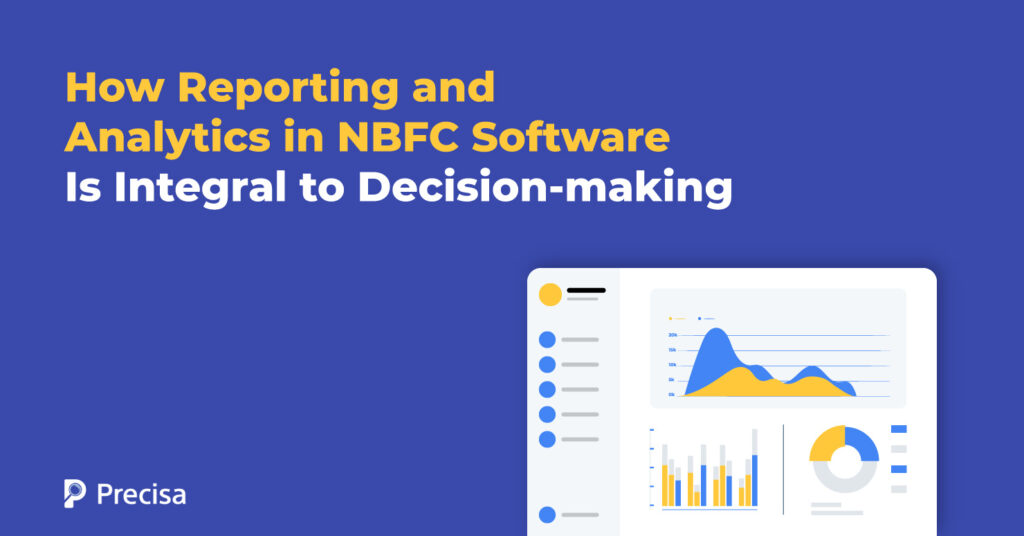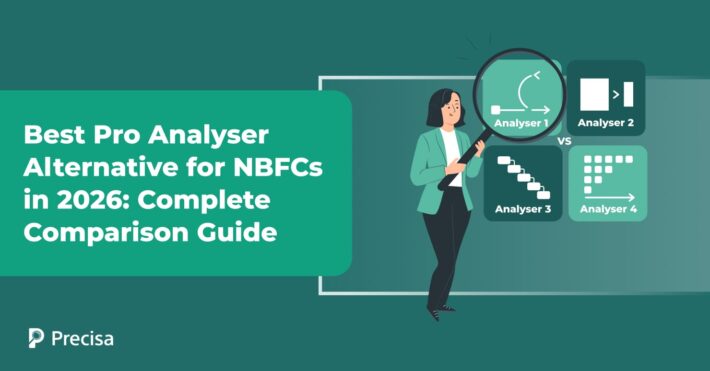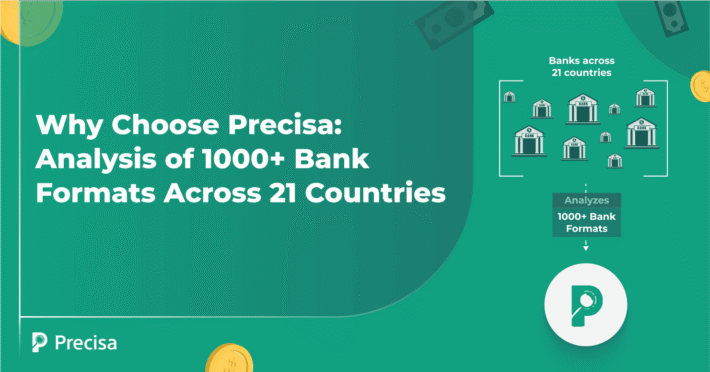How Reporting and Analytics in NBFC Software Is Integral to Decision-making

Proactive regulatory initiatives, evolving consumer behaviours, and the thriving funding environment have propelled the growth of the Indian fintech ecosystem.
Digital lending is expected to account for around 5% of retail loans in India by the first half of 2028.
As more and more customers, particularly, the millennial and Gen Z groups embrace the convenience and transparency offered by non-banking financial companies (NBFCs), they are tipped to transform the lending landscape in the country.
As a result, the demand for NBFC software solutions is likely to see significant growth thanks to the robust features to streamline loan lifecycle management and provide a smooth loan processing experience.
Apart from the flourishing Fintech system, the demand for the software tool hinges on its robust reporting and analytical features that help users make informed decisions.
This article explores the role of NBFC software solutions in today’s financial landscape and the importance of robust reporting features.
Getting Familiar with NBFC Software
As the name suggests, NBFC software is a cutting-edge software solution primarily designed to aid financial companies overcome the hurdles in their internal processes.
These tools ensure seamless loan lifecycle management and aim to strengthen the customer lending business by minimising manual intervention and automating key processes in the customer lending lifecycle.
Importance of Reporting Tools in NBFC Software

As NBFCs become an integral part of the Indian financial ecosystem, they must understand the regulatory and compliance requirements that bind them. Here are a few reasons why reporting tools in this software are important:
Regulatory Compliance
The Reserve Bank of India (RBI), the primary regulatory body for NBFCs in India, along with the Securities and Exchange Board of India (SEBI) has created a framework that allows NBFCs to operate legally in India.
Credit rating requirements, regulations for Know Your Customer (KYC), asset classification, and capital adequacy requirements are some of the most noteworthy guidelines issued by the RBI for NBFCs.
Tracking new developments and staying on top of the dynamic regulatory environment can get overwhelming which fuels the need for NBFC software. These tools create timely compliance reports to ensure NBFCs do not flout the defined regulations.
Additionally, many financial reporting tools collect, compile, and store data from several sources in a central database. This allows NBFCs to generate detailed reports that comply with the requirements of the concerned regulatory bodies.
Centralised Loan Portfolio Management
With over 2,300 high-value loan defaulters in India who collectively owe more than ₹2 lakh crore, wilful loan defaulting is among the top concerns for regulatory bodies and the government.
Hence, in-depth loan monitoring and tracking is a top priority for NBFCs allowing them to detect major fluctuations in the borrower’s financial situation that can impede their ability to repay the loan.
Moreover, NBFC software provides valuable insights in the form of intuitive dashboards that allow NBFCs to analyse the performance of a loan and determine the level of risk involved in a particular loan. These dashboards provide a clear picture of the portfolio’s position and bounce rates, aiding NBFCs to respond accordingly.
Additionally, every piece of reporting should be tailored with predefined rules to ensure they comply with the standards set by the RBI.
The best NBFC software leverages data analytics and cutting-edge technology including artificial intelligence (AI) to evaluate a borrower’s creditworthiness and accelerate the loan process. These insights not only accelerate the lending cycle but also minimise the risk of default.
Boosting Operational Efficiency
Loan management involves a range of functions from onboarding, documentation, performing credit checks, loan approvals, and disbursals.
Nearly 67% of the Indian population have applied for a loan to meet their fund requirements.
Despite the advent of tech-powered tools, managing loan applications can become challenging for NBFCs, resulting in delays and dwindling customer satisfaction.
The modern NBFC software populates the user data collected and submitted by loan applicants, eliminating the need for manual intervention and mundane paperwork.
Additionally, these tools also deliver timely payment reminders to loan applicants and create a robust end-to-end lending framework by leveraging algorithms, data analytics, and robotic triggers.
AI-driven analytical tools allow NBFCs to collect payments and monitor loans with high accuracy. Traditionally, NBFCs primarily depended on the borrower’s credit score and account balances to prioritise delinquent accounts and create recovery strategies.
That said, NBFCs can make a difference here by targeting accounts with no or little credit history.
Parting Words
The arrival of cutting-edge NBFC software is revamping how financial institutions evaluate lending cycles, generate reports, and maintain compliance defined by regulatory bodies, including the RBI and SEBI.
Financial reporting has become the need of the hour, allowing NBFCs to automate mundane and time-consuming admin tasks and focus on other critical tasks to drive success. The integration of cutting-edge technologies like AI and machine learning is expected to help NBFCs uncover precious insights and make better and more informed decisions.
Precisa’s financial reporting and analysis tools have opened the floodgates to seamless and accurate financial analysis for all types of financial entities. The solutions are developed to minimise dependency on manual tasks and aid financial institutions automate processes across the lending lifecycle.
Book a demo today to transform your financial reporting with Precisa’s advanced solutions.



